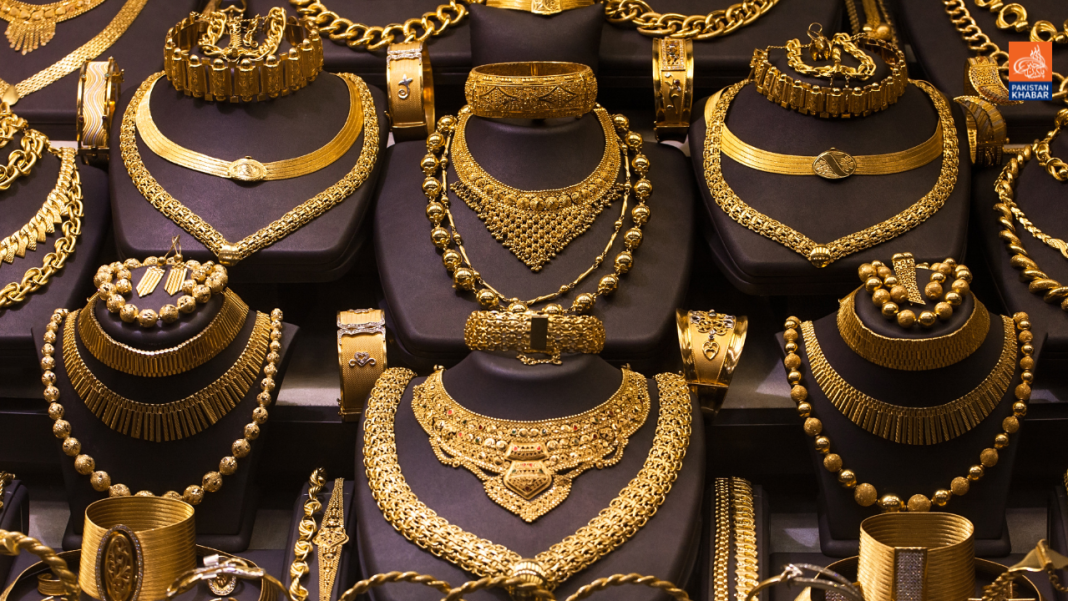On Thursday, the local gold association delivered a price shock to buyers by raising the domestic one-tola (24 kt) rate to a new all-time high of Rs261,800, an increase of Rs800 from Wednesday, despite a $8 per ounce drop in global gold prices to $2,504.
The All Sindh Sarraf and Jewellers Association (ASSJA) also raised the 10-gram (24 kt) rate by Rs686 to Rs222,451.
On Wednesday, the association had similarly increased local rates even though there was no rise in global gold prices. The association has been adjusting domestic rates based on the rupee-dollar exchange rate, despite the local currency having remained relatively stable against the US dollar for several months.
According to Mohammad Arshad, Chairman of the All Pakistan Jewellers Manufacturers Association, the soaring prices have significantly dampened the demand for jewellery, with sales plummeting to just 15-20 percent. This decline is largely due to the diminishing purchasing power of consumers, who are already struggling with rising electricity and gas bills.
He noted that people have gradually stopped giving small gold gifts such as rings, nosepins, and chains to brides due to the unaffordable prices, opting instead to give cash gifts of less than Rs5,000. Additionally, the sale of gold bangles, which typically weigh at least one tola (11.666 grams) or even eight to nine grams, has seen a sharp decline due to the steep prices.
Domestic gold pricing is based on international rates, which have been fluctuating due to geopolitical tensions arising from the conflict between Iran and Israel.
Mr. Arshad called on the government to intervene and support the industry by providing incentives for jewellery exports. He believes this could potentially increase the number of exporters and offer a much-needed boost to the industry.




